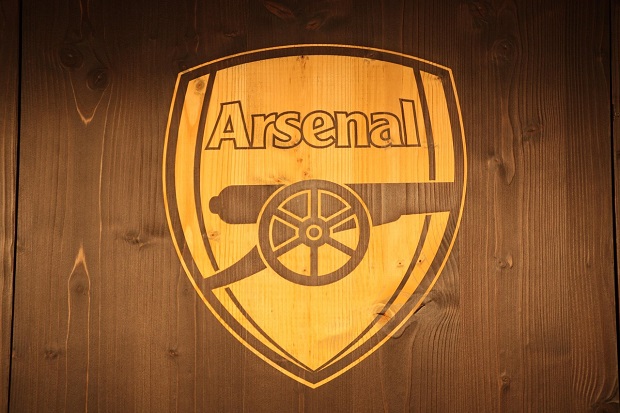- Arsenal Eye Anthony Gordon for Summer Move
- Arsenal to submit bid to sign Chelsea target Jules Kounde
- Arsenal remain keen on signing Juventus star Dusan Vlahovic
- Arsenal target Frankfurt’s Nathaniel Brown for summer move
- Arsenal dealt new fitness blow ahead of Madrid second leg
- Arsenal predicted line-up against Brentford
- Arsenal Eye Move to Beat Liverpool to Milos Kerkez
- Arsenal preparing to submit bid to sign Viktor Gyokeres
- Arsenal track Akturkoglu ahead of summer move
- Arsenal keen on signing Valencia midfielder Javi Guerra
Has Arsenal’s Collabs with ALD and Adidas Put Them into a New Position in the Fashion and Lifestyle Scenes?
The focus of football clubs used to center entirely around the pitch. Football clubs focused on goals, tactical plays and transfers while occasionally featuring tabloid scandals. Nowadays clubs like Arsenal have transformed into cultural brands that stand on their own. Not just sports teams, but lifestyle icons.
The transformation includes fashion collaborations which extend beyond simply producing attractive kits. Arsenal’s partnership with Aimé Leon Dore and ongoing collaboration with Adidas went beyond the design of player uniforms. It was about sending a message. One that said, “We’re more than football. We’re style. We’re street. We’re global.” Let’s dive in.
The ALD Effect
If you know, you know. ALD isn’t just another streetwear label. The brand developed its unique identity by blending nostalgic elements with clean designs and polished retro aesthetics that deliver both luxury and wearable comfort. The announcement of Arsenal’s collaboration with ALD created a buzz throughout multiple industries.
The collaboration with ALD made football fans feel proud because it added a touch of coolness to their club. The fashion community respects ALD because their approach extends beyond logos to include curation and craftsmanship while maintaining an effective yet understated aesthetic.
This wasn’t just about merch. It was about storytelling. The campaign drew together well-known personalities from North London’s creative community while documenting local life to connect Arsenal’s history with a modern cosmopolitan story. This isn’t a new tactic – in iGaming, some of the top-rated casinos on casinos.com have partnered with brands that make them seem more down-to-earth and authentic. Yet, it is still somewhat rare in football.
The clothing designs maintained simplicity and heritage while being suitable for everyday wear yet remained true to Arsenal. The partnership between the club and its collaborators felt genuine instead of being a mere marketing gimmick. It felt like it meant something.
Adidas and Arsenal: A Growing Legacy
ALD represents only one element within the entire puzzle structure. The ongoing partnership between Adidas and Arsenal continues to place the club at the forefront of the fashion-football crossover movement. Their latest retro-themed kits which mix bruised banana nostalgia with stripped-down vintage styles effectively bring historical elements into today’s fashion scene. Creating a design balance like this presents a significant challenge when you have to please a fan base as vocal as Arsenal’s supporters.
Adidas has successfully honored the club’s legacy while introducing modern design elements. Incorporating lifestyle apparel such as pre-match jackets and travel wear that fans can easily wear every day enhances the team’s fashion identity and makes it relevant beyond matchday occasions.
The clothing items transcend typical game day pub wear. You can spot them across Instagram grids and music videos while they also fill city streets internationally.
Football Meets Culture, Finally
This isn’t unique to Arsenal, of course. Multiple football teams have attempted to establish fashion relevance. The collaboration between PSG and Jordan Brand serves as a leading example. But what’s different here is the execution. Arsenal strategically selects collaborations that align with their brand instead of randomly partnering with high-profile entities. The club creates their lifestyle identity through each authentic step of development.
London’s influence is key. Arsenal operates from a major global center of culture and the arts. Music, fashion and youth culture intersect daily in North London which goes beyond being just a football hub.
Arsenal has transformed its identity beyond that of a standard sports organisation by harnessing the cultural energy around it (which is working wonders now that Arsenal isn’t doing the best).. Clubs now understand that modern fans interact with them through entirely new methods. Some are in it for football. Others? They’re in it for the drip. And both are valid.
Younger Audiences, New Touchpoints
This change highlights exactly what younger audiences look for in football experiences. The importance of the football match duration has diminished beyond the traditional 90 minutes on the pitch. It’s about the full lifestyle.
The manner in which players dress alongside their entrance into the stadium and club brand partnerships determine how these elements appear in digital content. Arsenal’s collabs don’t feel like afterthoughts. Their activities extend the club’s identity while providing fans ways to engage without having to know all statistical data or match schedules.
Teens might skip some games but they love to wear limited-edition Arsenal x ALD windbreakers. Fans who see Bukayo Saka in an advertising campaign will view him as both a football player and a fashion icon. Arsenal demonstrates a superior comprehension of today’s fan experience compared to most clubs.
So, Has Arsenal Changed the Game?
In a word, yes. They’ve successfully reinvented their image while remaining true to their essence. Arsenal has successfully created an authentic and fashionable connection between football and fashion by building a bridge that has its roots in community values. The ALD collaboration boosted Arsenal’s status yet the foundational work with Adidas and their cultural initiatives created lasting success.
By 2025 football clubs transcend match day activities to create wider cultural impact. It’s about what you represent. Arsenal currently stands as a symbol of a future where sporting excellence merges with style and storytelling under its crest.




